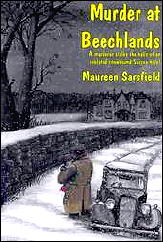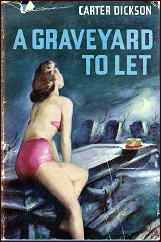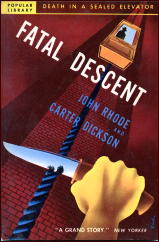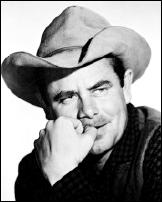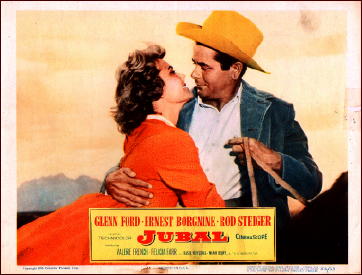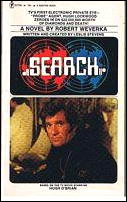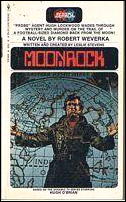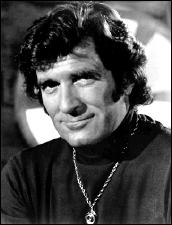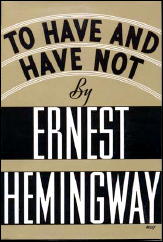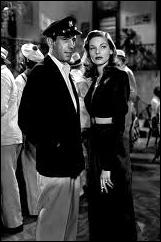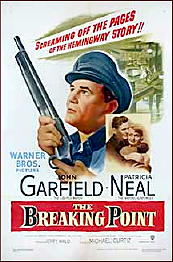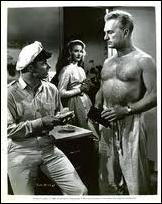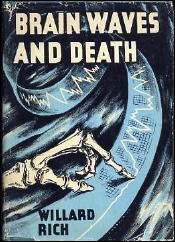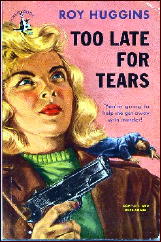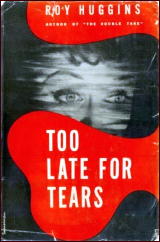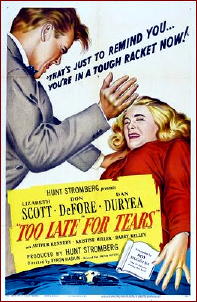REVIEWED BY MICHAEL SHONK:
SEARCH. NBC, 1972-73; Leslie Stevens Productions in association with Warner Brothers. Creator and Executive Producer: Leslie Stevens. Cast: Tony Franciosa as Nick Bianco, Burgess Meredith as V.C.R. Cameron.
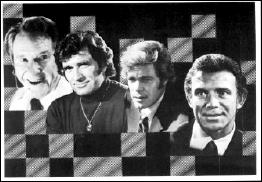
This is the third in a series of four posts examining the TV series SEARCH and its pilot TV Movie PROBE. For earlier posts:
Probe [Pilot/TV Movie]: https://mysteryfile.com/blog/?p=16030
Search [The Hugh O’Brian episodes]: https://mysteryfile.com/blog/?p=20990
World Securities Corporation divided Probe up into units such as the Omega Division that existed to deal with organized crime. Its top agent was Nick Bianco, a hardboiled ex-cop who was quick with his fists. An expert on organized crime Bianco had served on the famous “Crime Commission.†After being framed for a crime he didn’t commit, he left the Commission and cleared his name, after which he joined World Securities Probe’s Omega Division.
Tony Franciosa made a TV career out of playing one character and Nick Bianco was no different. Franciosa’s Bianco even used a notebook as his character Jeff Dillon did in NAME OF THE GAME.
Bianco’s relationship with Probe Control and Cameron had its differences from Lockwood (Hugh O’Brian) and Grover (Doug McClure). Bianco was the most likely to abandon Probe Control while on the case and continue on his own.
Women play a different role in the Bianco episodes. Bianco was always more interested in solving the crime than romance. He was fast with the ladies, but they had to wait until after the case was solved.
EPISODE INDEX —
Produced by Robert H. Justman. Probe Control Cast (recurring) Ron Castro as Carlos, Ginny Golden as Keach, Byron Chung as Kuroda, Albert Popwell as Griffin, Amy Farrell as Murdock, Tony DeCosta as Ramos, and Cheryl Stoppelmoor (Cheryl Ladd) as Amy Love.
“One of Our Probes is Missing” (9/20/72) Written by Leslie Stevens Directed Paul Leacock Guest Cast: Stephanie Powers, Allen Garfield, and Milton Selzer *** A Probe agent disappears while investigating a counterfeiting case with $100 bills so perfect the US Mint can only tell them apart by their duplicate serial numbers.
The episode was a good one if you can accept the TV simplistic plot.
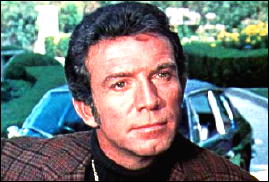
“Live Men Tell Tales†(10/11/72) Written by Irving Pearlberg Directed by Marc Daniels Guest Cast: Louise Sorel, Leslie Charleson and Torrin Thataher *** An old friend of Bianco from the Crime Commission, now Probe agent is murdered by a mysterious villain out to take over the entire World of organized crime.
This one is probably my favorite episode of the series. A wannabe Bond villain runs a worldwide organization complete with gadgets, agents, and an evil lair with a mad scientist. Add a witty charming femme fatale who has her hands full with the agent’s widow, a twist that is expected but sets the fun going, and the result is a clever escapist episode with the ladies, Louise Sorel as the femme fatale and Leslie Charleson as the middle class widow, stealing the show.
“Operation Iceman” (10/25/72) Written by S.S. Schweitzer Directed by Robert Friend Guest Cast: Edward Mulhare, James Gregory and Mary Frann *** Nick leads a team of Probe agents, that includes his mentor, who are assigned to stop organized crime’s top assassin, the Iceman from killing an American Ambassador.
Slow moving, weak dialog, and insipid characters did not help this predictable mystery. Nick is not thrilled having to work with others but behaves as long as he is boss. Of course, Nick goes rogue and saves the Ambassador all by himself.
“Let Us Prey†(1/3/73) Written by Don Balluck Directed by Russ Mayberry Guest Cast: Diana Hyland and Albert Paulsen *** A multi-billionaire’s fiancee is missing. He demands Nick Bianco, her old boyfriend, be assigned the case.
Richard Connell short story “The Most Dangerous Game” gets ripped off again for this poor excuse to ditch Probe Control. Bianco is trapped on an island with an insane rich man, a hired killer and Diana Hyland giving an embarrassing shrill performance.
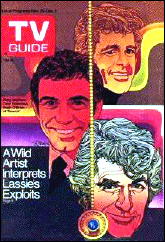
In week 14 there is a visually noticeable production change. Fifteen episodes had been filmed and produced by Robert H. Justman for showrunner Leslie Stevens (two would air at the end of the season). While the final eight episodes filmed were produced by replacement showrunner and current executive story consultant Anthony Spinner (MAN FROM UNCLE, DAN AUGUST).
Produced by Anthony Spinner. Probe Control Cast: Pamela James as Miss James and Tom Hallick as Harris (the character did not appear in “The Matteson Papersâ€).
“The 24 Carat Hit†(1/24/73) Written by Jack Turley Directed by Barry Shear Guest Cast: Dane Clark, William Smith and Nehemiah Persoff *** Probe agent Ed Bain search for missing gold leads him to an exiled mobster illegally back in the States. After the mobster’s thug kills Ed’s wife and kidnaps his daughter, a wounded Bain goes after them, refusing the help of old friend Nick Bianco and Probe Control.
If you can stomach the over the top macho stupidity, and ignore the irony of Bianco telling Bain he can’t do it alone, the story is good in a Quinn Martin kind of way. Nice action, well directed. The action takes place mainly at night giving it that TV wannabe noir look.
“The Clayton Lewis Document†(2/14/73) Written by Norman Hudis Directed by William Wiard Guest Cast: Craig Stevens, Julie Adams and Rhonda Fleming *** Clayton Lewis is heading up an important World Disarmament conference and is being blackmailed to reveal America’s position. Lewis’s wife comes to Nick Bianco, an old friend from the Crime Commission days, for help.
Probe Control played a small but helpful role. Typical Bianco refuses to listen when Cameron and the clients demand he stop. No surprises but the story’s pace keeps the action moving.
“The Mattson Papers†(2/28/73) Teleplay by S.S. Schwartzer and Don Balluck Story by Don Balluck Directed by Willaim Wiard Guest Cast: Cameron Mitchell, Tim O’Connor and Nancy Wilson *** US Senator hires Probe to find a missing witness who has information about organized crime in a Texas small town.
Again your average TV plot with most of what made SEARCH different removed. Little humor, no style, just the same old TV cop show.
“Ends of the Earth†(3/21/73) Written by Robert C. Dennis Directed by Ralph Senensky Guest Cast: Sebastian Cabot, Jay Robinson and Diana Muldaur ***Bianco goes undercover as a killer in need of the services of Ends of the Earth travel agency. The travel agency offers a service similar to Witness Protection only for criminals.
The plot is so delightfully twisted it brings back memories of 60s shows such as MAN FROM UNCLE and THE AVENGERS and doesn’t let us down.
The ratings stayed much the same no matter whom the star of the week was. CBS’s CANNON won the time slot from the start, but both ABC’s JULIE ANDREWS SHOW and NBC’s SEARCH were sampled in the beginning by many.
Week One had Hugh O’Brian in “The Murrow Disappearance†finishing 39th out of 65. CANNON finished 21st and JULIE ANDREWS finished 34th.
Week Two had Tony Franciosa in “One of Our Probe’s Is Missing†finishing 31st out of 65. CANNON finished 11th and JULIE ANDREWS dropped to 61st.
Week Three had Doug McClure in “Short Circuit†finishing 36th out of 65. CANNON finished 19th and JULIE ANDREWS finished 45th.
The audience had seen enough. Week Four of the season had Hugh O’Brian in the episode “Moonrock†finishing 53rd out of 64. CANNON finished in 10th and JULIE ANDREWS in 57th.
From then on the pattern was set. CANNON remained in the Top 20 while SEARCH stayed in the bottom 20.
January 17, 1973 ABC replaced JULIE ANDREWS SHOW with OWEN MARSHALL, COUNSELOR AT LAW. A week later, the first Spinner episode appeared. It did not improve the ratings.
Not surprisingly, Spinner reduced the science fiction aspects of SEARCH for more typical TV detective. While unlikely, the change might have worked, but not in the time slot opposite of the all ready popular CANNON. A few years later Anthony Spinner would be producing CANNON.
One can understand the thought about Quinn Martin-izing the series. It was 1972 and QM Production was one of the most successful independent TV production companies doing TV detectives. The gadgets, computers, and science fiction were still unwelcomed by mainstream television viewers. But the other changes made less sense.
It is odd that the studio or network made the last ditch effort to save the series. Why spend the money to redesign the set for the group you hope to reduce to a limited role? My guess is the change of Probe Control red décor to a blue one was blue offered a better match for the hard-boiled TV detective look they wanted.
With production budget almost certainly dropping with the bad ratings, I can understand the reduction in Probe Control staff. There was no need for half a dozen techs working the computers when two would do, but why hire two new actors instead of using the original group? And why change actors playing Dr. Barnett from Ford Rainey to Keith Andes?
The change from Leslie Stevens’ science fiction detective/spy to Anthony Spinner’s more typical TV detective was abrupt but affected ex-cop Nick Bianco in a positive way. However, the same can’t be said for the third Probe agent, young C.R. Grover played by Doug McClure, but more on that next time.
NEXT: SEARCH – The DOUG McCLURE Episodes.
Ratings from “Broadcasting†magazine: http://www.americanradiohistory.com/Broadcasting_Individual_Issues_Guide.htm
Recommended reading:
TV Obscurities: http://www.tvobscurities.com/articles/search
Rap Sheet: http://therapsheet.blogspot.com/4009/06/search-me.html
Warner Bros. Press Releases: http://probecontrol.artshost.com/publicity.html



